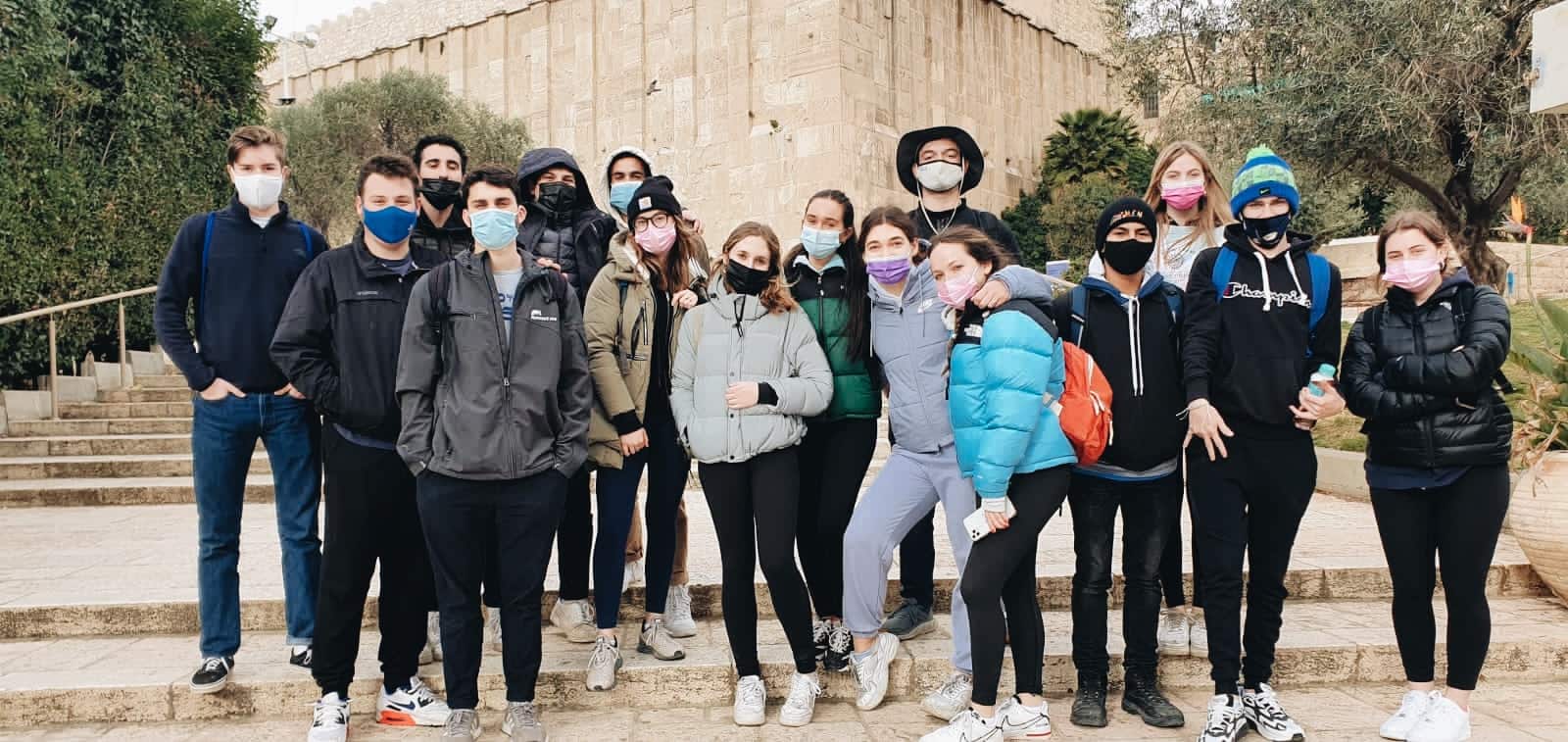on, red slanted roofs facing towards us in a uniform arrangement. As we entered Hebron, the largest Arab city in the West Bank, we began to learn about the religious history of the city, said to be the second most important city in Judaism. The city was home to the matriarchs and patriarchs of Judaism, and deep below the modern houses lie the very stones and ground that those important figures walked and lived on. However, throughout our investigation of the religious history of the city, we were constantly reminded of the violent nature of the modern political scene in the region. Gravestones and memorials of Israeli soldiers, Jews, and Palestinians alike, sit on the side of each road in plain sight. As we walked through the city, there was an air of calm hanging over the roads and abandoned shops and houses. Without having seen and read about violent incidents that occur constantly within the city, the tension and sense of imminent danger or violent engagement may not have been immediately apparent. In fact, we spoke with a New York Jew who has lived in Hebron for many years, and a Palestinian Muslim named Muhammad who has always lived in H2, the section of Hebron under Israeli military control, and our conversation initially suggested that we could be hopeful for cooperation between the two sides, and that cooperation may already exist to some extent. Mordecai introduced himself to us with a pledge that he had made when he first moved to Hebron; every day, he would help one person, “whether their name was Mark, Moshe, or Muhammad.” Religion would not be a barrier to his desire to help others in the city he felt so connected to. Muhammad spoke similarly, and explained that he had many Israeli friends. However, as the conversation continued, deep-rooted issues that would clearly perpetuate the divide between the two peoples became apparent. When asked by a student how often he interacts with local Arabs, Mordecai replied facetiously: “It depends on how my car is doing.” He explained that most of the car mechanic shops were run by local Arabs. As he continued to be questioned, Mordecai was reluctant, and even seemed to refuse to acknowledge any Israeli role in the displacement of Palestinians, and angrily argued that to cede any land to the Palestinians would be ridiculous, as they have no reasonable claim to the land. As Muhammad discussed his personal opinions, he explained that he was against the creation of any religious state. He furthered that he was only against their creation as he thought religious states and Middle Eastern peace were mutually exclusive achievements. Although Muhammad’s justification seems reasonable, his opinions are shared by many Palestinians who are categorically against the existence of a Jewish state for different reasons. The lack of daily, normal interaction between Israelis and Palestinians, in addition to the presence of deep-seated, uncompromisable tenets of each side suggest a grim outlook for the possibility of conflict deescalation, or even resolution in the near future. Hebron, which serves as a microcosm of the larger Arab-Israeli conflict, was an enlightening and amazing city to have the opportunity to visit.
-Simon Siskel, San Marino, California
This week on Selah, we visited the Israel Museum. There was a fascinating temporary exhibit about women’s dress and modesty in Jerusalem, comparing the dress of Nuns, Muslims, and Charedi women. We recognized some of the new trends from our visit to Mea Shearim two weeks ago. It was very interesting to hear the women’s voices and perspectives on why they cover up so much. We also saw Chanukiyot from all over the world, and then we visited the Shrine of the Book to see the Dead Sea Scrolls in preparation for our visit to Qumran later in the week. At Qumran, we explored the different sects of Judaism in ancient times, and learned about the incredible story of the Dead Sea Scrolls, while enjoying another day in the Judean Desert.
At (th)INK! this week, we lit Chanukah lights and continued our exploration of the deeper meaning of the holiday, while sharing sufganiyot (jelly donuts!) and traditions from our own homes.
